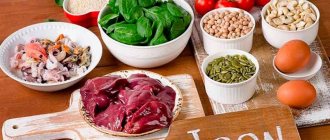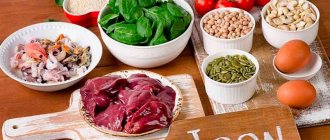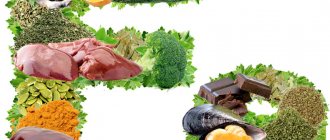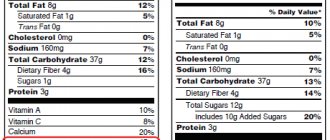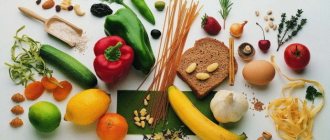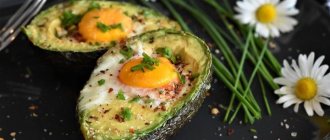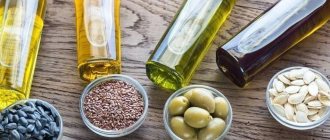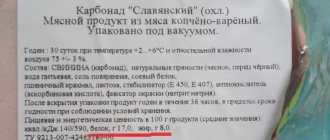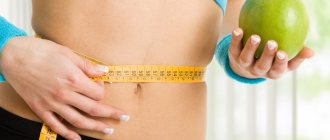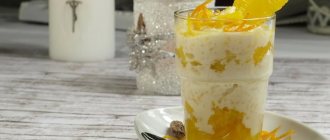Iron is an essential trace element that plays a huge role in our body. The normal amount of iron in the body of an adult is from 3.5 g to 4.5 g, of which two-thirds is in the blood, and the rest is in depots, which include muscles, liver, spleen, and bone marrow. A smaller amount is found in myoglobin and blood plasma. Despite such a small amount, iron does a huge job. The answer to the question of which products contain iron, as well as a comparative table, will be presented in the article.
How much iron does a person need per day?
The amount of iron you need from food each day depends on your age and gender, and whether you eat animal foods. Average daily iron intakes are listed below and are expressed in milligrams (mg). Vegetarians who do not eat meat or seafood need almost twice as much iron as indicated in the table, since the human body absorbs “non-heme” iron from plant foods less well than it absorbs “heme” iron from animal foods (source 1).
| Gender/age | mg iron per day |
| For babies 0-6 months | 0,27 |
| For babies 7-12 months | 11 |
| For children 1-3 years old | 7 |
| For children 9-13 years old | 8 |
| For men 14-18 years old | 11 |
| For men 19 and older | 8 |
| For women 14-18 years old | 15 |
| For women 19-50 years old (before menopause) | 18 |
| For women over 50 years of age (postmenopausal) | 8 |
| For pregnant | 27 |
| For breastfeeding women (in the absence of menstruation) | 9 |
General recommendations for men of all age groups and post-menopausal women are 8 mg iron per day, and for menstruating women 18 mg/day. The tolerable upper limit of iron intake for adults is 45 mg per day. If this level is exceeded, gastrointestinal upset may occur (source2).
Iron absorption
There are several reasons for optimal iron accumulation:
1. A complete and balanced diet;
2. The degree of absorption of iron in the body;
And if everything is clear with the first, then the second point usually raises questions.
The degree of iron absorption by the body will depend on:
- Type of origin of the product. For example, inorganic ferrous iron from plant foods is absorbed in the range of 6–15%. And the absorption of heme iron from animal products occurs in the range of 15–50% (on average 20–30%);
- From the presence of concomitant diseases and conditions in which the absorption of vitamins and microelements is impaired;
- And also on how this product was prepared and what it was used with.
Improve iron absorption: vitamin C and other organic acids, as well as fructose, sorbitol, amino acids (methionine, cysteine), “animal protein factor” (myoglobin + hemoglobin).
In addition, folic acid, pepsin and copper have a beneficial effect on iron absorption.
Important!
When consuming foods rich in iron, it is advisable to consume sour sauces or drink water with the addition of citrus juice.
The dangers of iron deficiency and lack of iron-containing foods in the diet
Above we talked about what role iron plays in the body and how much a person needs per day. Before we get into the iron-rich foods tables, we need to say a few more words about iron deficiency, the most common nutritional deficiency in the world.
When the body's iron consumption is not compensated by adequate dietary iron intake, latent iron deficiency occurs (first, low ferritin, then decreased iron levels in serum and carrier proteins), which eventually develops into iron deficiency anemia. With anemia, there is no longer enough red blood cells and hemoglobin in a person’s blood. The main symptoms of this condition are fatigue, weakness and irritability. If anemia is not treated promptly, a person may experience a fast or irregular heartbeat, shortness of breath, dizziness, deterioration of the skin, hair, and nails, complications during pregnancy, and slow growth in infants and children (sources, ).
Fortunately, unless your anemia is caused by frequent blood loss or problems with the body's absorption of iron, you can overcome iron deficiency by including foods high in iron in your diet. And this is not the notorious pomegranate, which contains only 0.3 mg of iron per 100 g of product, and not even such quickly oxidizing foods as avocados (0.55 mg/100 g), bananas (0.26 mg/100 g) and apples (0.12 mg/100 g).
Fresh juices
Store-bought juices will not be useful in the battle with low hemoglobin; only natural products will be useful. Freshly squeezed drinks are perfectly absorbed and are rich in a huge number of vitamins. During the treatment process, it is worth preparing them two to three times a day and using them immediately after preparation.
Champions for eliminating iron deficiency in the body: carrot, apple, beet juice. Other freshly squeezed foods will also benefit.
- Fresh zucchini juice mixed with carrot or potato juice is extremely beneficial. It activates intestinal peristalsis, has a calming effect, and promotes the absorption of iron thanks to potassium, magnesium and vitamin C.
- Potato (freshly squeezed) juice helps solve the problem of low hemoglobin. The drink is drunk 30 minutes before a meal; it is enough to take about half a glass 2-3 times a day. Red potatoes are optimal for making juice.
- The benefits of pomegranate juice, once popular as a drink that restores iron levels in the body, are disputed by modern medicine. It is believed to cause constipation and a number of other side effects.
Carrot
Carrot juice has long been used to improve hemoglobin synthesis in the body. To restore the process, you need to drink about 2-3 glasses a day, about half an hour before meals (or an hour after meals).
Excellent results will be provided by a drink prepared from freshly squeezed juices of beets, carrots and radishes. To improve the situation with hemoglobin and increase the concentration of iron in the blood, the composition is taken in the amount of 2 tablespoons per day, treatment lasts a month.
In order for carrot juice to be better “perceived” by the body, you should eat sour cream (in a small amount) before drinking it, so the valuable components will be better absorbed.
Beetroot
Beets are a useful product for low hemoglobin, especially effective in the form of freshly squeezed juice. Good results are ensured by consuming a mixture of carrot and beetroot drinks, the recommended proportion is 2:1.
Beetroot juice should not be taken in large quantities due to its increased biological activity. The drink may have an irritating effect on the mucous membranes. Therefore, you should drink it exclusively in combination with soft formulations, not exceeding a dose of half a glass per day (divided into several doses). You should definitely keep the freshly prepared mixture in the refrigerator for 3 hours in an open container.
Apple
Unlike beet and carrot juice, which do not have an attractive taste in their pure form, apple juice is a tasty medicine. To enrich the body with iron, you can use it either alone or in combination with the juice of other vegetables (carrots, beets).
For example, you can prepare a drink by taking a quarter glass of carrot juice, a quarter of beet juice, and half of apple juice. The thoroughly mixed mixture is consumed twice a day.
All of the above products are not only effective tools for increasing hemoglobin, but also preventing problems associated with it. They should be included in the menu of pregnant women and children, if there are no contraindications.
TOP 18 foods containing large amounts of iron:
This list includes the animal and plant foods with the highest iron content per 100g, without taking into account the absorption of iron from different sources. According to Vegetarian Journal, vegans are recommended to eat about 1.8 times more iron from plant sources than non-vegetarians.
- Shellfish: from 7 to 14 mg of iron per 100 g of finished product;
- Liver, kidneys, heart: from 7 to 18 mg/100 g, stewed or fried;
- Legumes: from 2 mg for peas, to 15 mg for soybeans;
- Dark chocolate: 6-12 mg iron/100 g;
- Caviar: 11-12 mg;
- Seeds: from 5.7 mg for flax to 14.5 mg for sesame;
- Cashew nuts: 6-6.7 mg iron;
- olives , canned: 6.3 mg;
- Meat and poultry: 0.5-5 mg (2.5-5 mg for beef, 3-4.5 mg for ducks, geese, quail);
- Greens and cabbage: 1 mg (romaine lettuce) to 17.5 mg (thyme);
- Dried fruits: from 1 to 7 mg (2.6 mg of iron in 100 g of dried apricots, 3.5 mg in prunes);
- Quail eggs: 3.7 mg;
- Bran and cereals , especially amaranth, quinoa, bulgur: from 1 mg (boiled bulgur) to 18 mg (rice bran);
- Algae: 2-8 mg in raw form, 28.5 mg in dried spirulina;
- Fish: 1-2 mg baked, fried or grilled;
- Goat cheese: 1.6-1.9 mg;
- Onions and garlic: 1-2 mg;
- Mushrooms: from 1 mg (honey mushrooms, oyster mushrooms) to 12 (morels).
Source of figures: food composition databases. Detailed tables for all product categories are provided below in this article.
Menu (Power Mode)
The range of products is varied, as there are no significant restrictions. Nutrition should be complete and high in calories. You can consume gray and black bread up to 300 g per day, butter and vegetable oil up to 30 g.
Breakfast should be complete and must contain a protein dish (boiled meat, fried or stewed liver, eggs, cutlet, fish) with a side dish of cereals or vegetables. Weak tea with milk, cheese, bread, butter and honey.
The second breakfast includes cheese, fish of any method of preparation, stewed or raw vegetables, milk or rosehip infusion, any juice.
At lunch, the first courses should be cooked in meat, chicken or fish broth with a piece of meat, fish or meatballs. Second courses are also protein (stew, liver, meat or fish cutlets, turkey, rabbit) with vegetable or cereal side dishes, vegetable salads. You can prepare compotes from dried and fresh fruits, juices, and jelly.
The afternoon snack includes cottage cheese dishes, fresh fruits or berries (you can make mousses and jellies from them), tea with milk.
Dinner should also contain two courses. This can include meat and fish dishes with your favorite side dish and cottage cheese casserole with jam and milk.
At night - a fermented milk drink of your choice: kefir, yogurt, yogurt, acidophilus, fermented baked milk.
Difference in iron from animal and plant foods
The best food sources of iron contain “heme” iron, which is easier to absorb and virtually uninhibited by medications or other dietary components. Heme iron comes from hemoglobin and, accordingly, is found in foods that originally contained hemoglobin: meat, fish and poultry. Additionally, some studies have shown that iron is better absorbed when it chelates (interacts) with amino acids (source). And from our article What foods contain protein, you could find out that meat, fish and poultry are the highest quality sources of amino acids.
Non-heme iron is found in large quantities in both meat and plant foods such as soybeans, lentils, cabbage, leafy vegetables, cashews, seeds, mushrooms and dried fruits. However, some of them may also contain substances that interfere with the absorption of iron, for example, polyphenols, oxalates and phytic acid. Legumes and dark green leafy vegetables (including broccoli, kale and some leafy greens) are considered good sources of iron for vegans. In contrast, spinach and chard are high in oxalates, which bind iron and make it virtually unavailable for absorption.
More than 85% of the iron in the average human diet is non-heme, but less than 20% of this iron is absorbed into the body. For this reason, it is recommended to combine plant sources of iron in one meal with vitamin C, which helps the body absorb iron. Examples of such combinations: bean salad with bell pepper, spinach with lemon juice, sun-dried tomatoes with herbs. Sources: , , , .
Does calcium affect iron absorption?
A number of studies have shown that calcium can inhibit iron absorption. This point is often a concern because calcium is an important part of the diet of children and pregnant women, who are already at risk of iron deficiency. However, the results of most human studies have shown that Ca has only a minor effect on iron absorption unless Ca intake is typically very low. Sources: , .
Read the blog Forest Fairy: What foods contain calcium
General rules
Iron is an essential trace element that is necessary for the normal functioning of all living organisms. Many processes occur with its participation: hormone , cell differentiation, metabolism .
It is part of respiratory enzymes and takes part in tissue respiration and redox reactions, and its presence in red blood cells ensures oxygen saturation of tissues. The main part of iron (about 65%) is found in hemoglobin and various depots (these include bone marrow, liver, spleen), then myoglobin , tissue enzymes and blood plasma follow in decreasing order of its content.
The need for iron depends on its losses and consumption. An adult man needs to consume 1 mg daily (or 13 mcg per kg of weight), and women need almost 1.5 times more - 21 mcg per kg of weight. In the last trimester of pregnancy , the need for it increases to 80 mcg per kg. The same amount is needed for an infant.
Entered with food, it is absorbed in the gastrointestinal tract. With sufficient nutrition, 10-20 mg is received daily, but only 2.5 mg is absorbed. This is due to several factors. First of all, food products contain ferric iron (oxidized), and only divalent iron is well absorbed. Partial transformation into an easily digestible divalent form occurs in the presence of ascorbic , succinic and pyruvic acid . In addition, iron absorption decreases after food is cooked, frozen, or stored.
A decrease in iron levels in the body leads to the development of iron deficiency conditions. First, stocks from the depot are consumed. With this disease, the level of iron in the blood, liver, bone marrow and spleen decreases. This entails a disruption in the formation of hemoglobin , red blood cells ( erythrocytes ) and tissue trophic (nutrition) disorders occur.
The causes of iron deficiency conditions are:
- Intensive growth (especially in the first year of life and in adolescence - the pubertal growth spurt), pregnancy and breastfeeding - all these conditions require an increased need for iron, since its consumption increases. If the deficiency is not replenished, anemia develops. From 2-3 years of age, the need for micronutrients decreases until adolescence, when rapid growth again raises the risk of deficiency. It is highest in young girls in whom the menstrual cycle is developing (11-14 years). In pregnant women, anemia develops in 20-80% of cases.
- Blood loss (for ulcers, injuries, malignant tumors, hemorrhoids , diaphragmatic hernia , esophageal varicose veins , diverticulosis , diseases of the respiratory tract and urinary organs, menorrhagia and metrorrhagia ).
- Long-term donation.
- Impaired absorption of iron during resection of the stomach or intestines, decreased gastric secretion, malabsorption syndrome .
- Taking anticoagulants, hormonal contraceptives, long-term use of antibiotics .
- Poor nutrition (such as vegetarianism or anorexia ).
- Excessive physical activity.
- Alcohol intoxication (chronic).
Early symptoms of iron deficiency (latent stage of anemia) do not cause concern in a person, and he considers himself healthy. In the future, in addition to weakness and increased fatigue, disorders of the endocrine, central nervous system and cardiovascular systems are noted. Exercise tolerance is significantly reduced. IDA causes complications in the mother and fetus: anomaly of labor, fetal hypoxia , delayed fetal development. Iron deficiency in young children leads to delayed psychomotor and emotional development.
Treatment should be comprehensive - medications and a diet rich in iron. Considering that iron from food is not completely absorbed, drug treatment is mandatory. Even a complete and balanced diet allows you to cover the physiological needs of the body, but does not eliminate its deficiency in anemia.
Taking iron supplements should be long-term and an improvement in hemoglobin and red blood cells does not indicate restoration of its reserves. Therefore, after normalization of Hb, the medication is continued for 1-2 months, but at half the dose. It should be remembered that almost all tablet drugs have an irritating effect on the gastrointestinal mucosa, causing pain, heartburn , diarrhea , nausea and even vomiting. Possible staining of tooth enamel black. Blood or red blood cell transfusion is used for health reasons (critical hemodynamic condition) in severe anemia.
The patient's nutrition must be complete. The diet contains an increased amount of protein (130-140 g), mostly of animal origin. Protein is necessary for the synthesis of hemoglobin , the construction of red blood cells and the formation of easily digestible iron compounds.
The amount of carbohydrates is within the physiological norm (up to 400 g). This includes complex carbohydrates (cereals, grain breads, muesli, fruits, legumes) and simple ones (sugar, honey, jam).
Since fats inhibit hematopoiesis, their quantity is limited (up to 70 g). They prefer easily digestible fats (all types of vegetable oils and butter). Animal fats, fatty meat and poultry, lard, and fatty sausages are subject to restrictions.
It is necessary to introduce into the diet an increased amount of vitamins that take part in erythropoiesis (group of B vitamins , ascorbic acid ). B vitamins are found in yeast (baker's and brewer's), legumes, liver, kidneys, egg yolks, meat, fish, milk, and cottage cheese. Folacin contains green lettuce, cabbage, green onions, soybeans.
Of course, an iron-containing diet must also include foods high in this microelement:
- meat (beef, rabbit, turkey, chicken);
- fish;
- beef tongue;
- liver (pork and beef);
- kidneys;
- heart;
- cottage cheese;
- chicken egg.
If we analyze food products containing iron, animal meat and poultry are sources of heme iron (only muscle tissue contains it) and its bioavailability is higher. In this regard, they should form the basis of the diet. If we compare animal products according to the content of this microelement, they are distributed (in descending order) as follows: beef tongue, rabbit meat, veal, beef, chicken egg, lamb, turkey, pork, chicken, cheese, cod, pink salmon, cottage cheese.
Iron in food products of plant origin (vegetables, legumes, cereals, tubers, fruits), as well as in milk and fish, is contained in non-heme form, the digestibility of which is much lower. In addition, tannins , soy protein, phosphates, dietary fiber and phytins form insoluble compounds with Fe.
Plant sources of iron include: asparagus, buckwheat, oat and millet cereals, grain bread, beets, sauerkraut, onions, fresh cabbage, zucchini, squash, green vegetables, mint, tops of plants and vegetables (radish, nettle, carrots, turnips) , mustard), dandelion leaves, watercress, apricots, apples, pears, oranges, pineapples, peaches, plums, strawberries, dried fruits, raspberries, strawberries, cherries, black currants.
Animal and poultry meat is a good source of heme iron with high bioavailability
Despite this, the diet should contain vegetables, herbs, and fruits, since they are the only sources of vitamin C , in the presence of which the absorption of this microelement in the duodenum improves (it restores iron and forms well-absorbed chelate complexes with it). It is necessary to eat all green leafy vegetables, citrus fruits, sea buckthorn, rose hips, plums, black currants, all sour berries, pears, apples, all types of cabbage, including sauerkraut, carrots, beets, lettuce peppers, pumpkin, tomatoes.
Promote iron absorption and normalize the process of hematopoiesis:
- B vitamins - folic acid and cyanocobalamin - play a great role in hematopoiesis and their deficiency leads to disruption of DNA synthesis in stem cells, and this negatively affects the rate of hemoglobin synthesis. Sources of folic acid (lettuce, spinach, green onions, parsley, lentils, beans, beans, all types of cabbage, asparagus, citrus fruits, pears, apples, apricots, bananas, kiwi, pomegranate, currants, strawberries, grapes, raspberries) must be present in the diet. Suppliers of cyanocobalamin are: animal liver, meat, fish, caviar, fermented milk products, raw chicken egg yolk, yeast, salads, green onions, vegetable tops.
- Copper, which contains liver, cereals, legumes, mushrooms, nuts, raw yolk, strawberries, black currants, watermelons, horseradish, asparagus, beef, wheat sprouts, barley, asparagus, lentils, parsley, rye bread, kefir, yogurt.
- Succinic acid , found in fermented milk products, sunflower oil, sunflower seeds, barley, rye bread, gooseberries (green varieties), apples, cherries, grapes.
- Zinc, which can be obtained by eating yeast, liver, kidneys, legumes, mushrooms, beef, cheeses, eggs. The presence of an additive effect of zinc and iron justifies the need for use during pregnancy.
- Cobalt contains: liver, legumes, kidneys, grains, salad greens, beets, pumpkin, green vegetables, gooseberries, raspberries, apples, black currants, apricots, cherries, pears, nuts, citrus fruits, mushrooms.
- Sulfur-containing foods: onions, garlic and all types of cabbage.
- Spicy herbs - thyme, mint, cinnamon, anise, which can be used to season all dishes.
- “Animal protein factor” - protein increases the absorption of micronutrients and contains myoglobin and hemoglobin.
- Simple carbohydrates (fructose, lactose, sorbitol).
- Amino acids ( histidine , lysine , cysteine ) form easily absorbed chelates.
It is also necessary to take into account antagonistic products that impair the absorption of iron and form insoluble salts with its trivalent form. Such products include:
- Tannin-containing - the main content of tannin in coffee and tea.
- Chocolate.
- Phytin-containing foods (whole grains, rice, soy flour, legumes, bran, walnuts). Soaking cereals, legumes and nuts significantly reduces the phytic acid content;
- Polyphenols of nuts, legumes, tea.
- Oxalates (chocolate, grains, corn, spinach, sorrel, milk, tea).
- Foods high in calcium: sesame, milk, cottage cheese, dried fruits. Calcium can reduce the absorption of heme and non-heme iron.
- Eggs because they contain albumin and phosphoprotein .
- Cereals due to their dietary fiber and phytate . Dietary fiber in the intestines is almost not digested, and iron is fixed on it and excreted in feces.
Alcoholic drinks destroy iron in foods that are consumed with them. Heme iron has a relatively high heat stability, and foods with the non-heme form are not recommended for heat treatment. Meat, liver and fish, with the simultaneous use of vegetables and fruits, increase the absorption of iron from them.
Tables of iron content in animal products
The first table we prepared shows which foods contain the most iron. The highest iron content per 100 g is found in products of animal origin, but not meat, but the spleen, liver, kidneys, hearts and lungs of livestock, as well as poultry offal.
Table 1. Iron content in meat and offal
A few notes:
- Unlisted raw lungs and kidneys contain approximately the same amount of iron as raw liver.
- In unspecified parts of beef there is an average of 2.5 to 3.5 mg of iron per 100 g of product prepared by any method, in lamb - from 1.6 to 2 mg, in veal and turkey - on average 1-1.5 mg, in chicken – 1.4 mg, the least – in pork (0.5-1.5 mg).
- Game meat has a significantly higher iron content than domestic animals and poultry.
- Vegetarian meat substitutes contain on average 12 mg of iron per 100 g of product with a calorie content of 311 kcal.
Also read: What oil to fry in without harm to health
Other animal foods that contain large quantities of iron are shellfish, caviar, algae, fish and crustaceans.
Table 2. Iron content in fish and seafood
Table 3. Other animal foods high in iron
Anemia. Symptoms and causes of pathology development
Anemia is a deficiency of iron in the blood.
Anemia is a deficiency of iron in the blood, a decrease in hemoglobin concentration, and a decrease in the total number of red blood cells.
This pathology is not an independent disease. This is a consequence and a symptom. The reasons for the development of this pathology are different:
- a diet low in iron-containing foods;
- various mono-diets;
- vegetarianism and veganism;
- lack of vitamins and microelements;
- infectious diseases;
- blood diseases;
- the body's reaction to aggressive treatment;
- helminthic infestations.
Normal hemoglobin levels in the blood depend on the age, gender and condition of the patient. Hemoglobin standards for different categories:
- Children, depending on age – at least 110–120 units.
- Men – 130–160 g/l.
- Women – 120–140, while expecting a baby – at least 110 g/l.
Often, a lack of iron in the blood is asymptomatic and a person learns about this condition only during a routine examination. But at the same time, the patient may complain of tinnitus, increased fatigue, lack of air, headaches, and lack of appetite.
To treat this syndrome, iron-containing preparations are used, and the patient is recommended to eat a diet with a high content of this substance.
Iron content in plant foods
We present to you 7 more tables prepared by us, clearly demonstrating in which plant foods you will find the most iron.
Table 1. Iron content in legumes
Table 2. Iron content in cocoa and chocolate
Table 3. Mushrooms - foods containing large quantities of iron
Note: since mushrooms lose a lot of size after cooking, a 100 g serving of fried or boiled mushrooms will have significantly higher iron content than 100 g of raw mushrooms.
Also read: Which foods contain a lot of vitamin B12?
Table 4. Iron content in vegetables and herbs
Iron content in dried and boiled vegetables (per 100 g of product):
- Sun-dried tomatoes: 9.09 mg iron, 258 kcal;
- Potato peel, baked: 7.04 mg, 198 kcal;
- Spinach, boiled: 3.57 mg, 23 kcal;
- Pumpkin leaves, boiled: 3.20 mg, 21 kcal;
- Chard, boiled: 2.26 mg, 20 kcal;
- Carrots, dried: 3.93 mg, 341 kcal;
- Beet greens, cooked: 1.90 mg, 27 kcal;
- Dandelion greens, boiled; 1.80 mg, 33 Kcal;
- Rapini, boiled: 1.27 mg, 25 kcal;
- Brussels sprouts, boiled: 1.20 mg, 36 kcal;
- Collard greens, boiled: 1.13 mg, 33 kcal;
- Baked potatoes with skin; 1.08 mg, 93 Kcal;
- Red tomatoes, stewed: 1.06 mg, 79 kcal;
- Acorn squash, baked: 0.93 mg, 56 kcal;
- Asparagus, boiled: 0.91 mg, 22 kcal.
Table 5. Iron content in dried fruits, berries and fruits
Also read: The healthiest berries + KBJU, vitamins and minerals in their composition
Table 6. Which grain products are high in iron?
Iron content in some cooked cereals per 100 g:
- Amaranth: 2.10 mg, 102 Kcal;
- Teff: 2.05 mg, 101 Kcal;
- Spelled: 1.67 mg, 127 Kcal;
- Quinoa: 1.49 mg, 120 Kcal;
- Barley: 1.33 mg, 123 Kcal;
- Bulgur: 0.96 mg, 83 kcal.
Also read: The healthiest cereals + tables of their composition
Table 7. Iron content in nuts and seeds
Note: Sesame paste contains 19.20 mg of iron at 586 Kcal, and tahini contains 8.95 mg at 595 Kcal.
Menu for anemia
It is worth paying attention to the fact that if you notice symptoms of anemia, you should consult a doctor. An example of this menu demonstrates that following a diet rich in iron is very easy, healthy and tasty.
| Breakfast | Oatmeal with banana, raisins, sesame paste (tahini) |
| Snack | Dried fruit compote, a handful of pine nuts |
| Dinner | Beetroot soup, bran bread, turkey cutlet with pomegranate sauce |
| Afternoon snack | Blackcurrant, banana and green buckwheat smoothie |
| Dinner | Salad of fresh vegetables and herbs, beef liver soufflé |
Spices are the foods that contain the most iron per 100 g.
Since spices and seasonings are not staple foods and are added to dishes in rather modest quantities, we did not include them in our TOP 18 best sources of iron. However, they are the true record holders for iron content per 100 g. Therefore, at the end of the article, we present to you a list of the TOP 15 spices for iron content:
- Thyme, dried: 123.60 mg;
- Basil, dried: 89.80 mg;
- Mint, dried: 87.47 mg;
- Marjoram, dried: 82.71 mg;
- Jeera (cumin seeds): 66.36 mg;
- Turmeric, ground: 55.00 mg;
- Dill, dried: 48.78 mg;
- Celery seeds: 44.90 mg;
- Bay leaf: 43.00 mg;
- Coriander leaves, dried: 42.46 mg;
- Savory, ground: 37.88 mg;
- Anise seeds: 36.96 mg;
- Oregano, dried: 36.80 mg;
- Fenugreek seeds: 33.53 mg;
- Tarragon, dried: 32.30 mg.
What interferes with iron absorption
For better absorption of this microelement, it is important to know which substances are iron antagonists. It is preferable to take a break of 3-5 hours between taking them.
Foods that interfere with iron absorption:
- Tannins
They are found in tea, cocoa, coffee. For example, tea reduces the absorption of iron by 62% compared to water;
- Phytates
These substances are found in cereals, bread, legumes, and nuts. Therefore, before preparing or consuming plant foods such as buckwheat, legumes, nuts, they should be soaked to reduce the amount of phytic acid, as it interferes with the absorption of iron.
- Phosphates and calcium
You should not consume dairy products together with iron-containing foods. The interval between their doses should be at least 3 hours.
- Oxalates
Spinach is considered to be one of the leaders in iron content among plants. But the problem is that it contains oxalic acid. This means that the benefits of spinach will only manifest themselves if they are cooked correctly (heat treatment with the addition of olive oil reduces the amount of oxalates). Otherwise, spinach will be an iron inhibitor.
- vitamin E or zinc also impairs the absorption of iron ;
- Medicines : antacids, proton pump inhibitors (omeprazole and the like), tetracyclines;
- In addition, deficiency of vitamins and minerals reduces absorption: B6, B9, B12, copper, magnesium and manganese . In this case, copper and manganese can be taken simultaneously with iron (for better tolerability, iron supplements are best taken with food, but even better - before). Molybdenum, zinc, and cobalt have a less significant effect.
